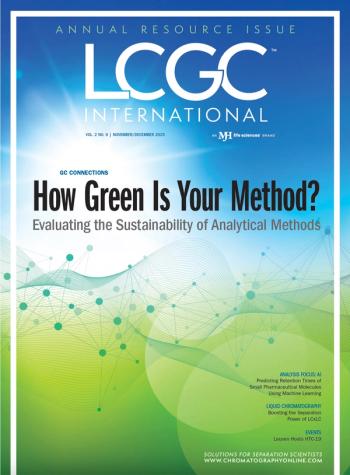News|Events|January 4, 2024
Innovative Derivatization Protocol Revolutionizes Human Lipidome Analysis via Electrophoretic Separation
Author(s)LCGC Staff
A recent lipidomic study explored how 3-methyl-1-p-tolytriazene (MTT) can be an alternative solution when conducting quantitative phospholipid (PL) methylation.
Advertisement
A recent study out of McMaster University in Canada advances lipidomic research by introducing a new approach that aids our understanding of the human lipidome. Lead author Philip Britz-McKibbin and collaborators introduced a derivatization protocol utilizing 3-methyl-1-p-tolyltriazene (MTT), heralding a safer and highly efficient alternative to diazomethane for quantitative phospholipid (PL) methylation (1). Their findings were published in Analytical Chemistry, and they reveal how the new protocol advances capillary electrophoresis–mass spectrometry (CE-MS) capabilities beyond aqueous buffer conditions.
Orthogonal separation techniques coupled with high-resolution MS (HRMS) have become essential in navigating the complexities inherent in the human lipidome (1). Despite this, electrophoretic separations have remained largely overlooked in contemporary lipidomics. However, the innovative MTT-based protocol, integrated with multisegment injection–nonaqueous capillary electrophoresis–mass spectrometry (MSI-NACE-MS), promises a paradigm shift (1).
This novel charge-switch derivatization strategy ensures expanded lipidome coverage, particularly benefiting zwitterionic PLs analyzed as cationic phosphate methyl esters. By mitigating isobaric interferences and ion suppression effects, the approach enhances resolution, sensitivity, and throughput, reducing analysis time to approximately 3.5 minutes per sample (1).
Validation of this method involved the analysis of methyl-tert-butyl ether extracts from reference human plasma. Notably, it facilitated a direct comparison of 48 phosphatidylcholine and 27 sphingomyelin species, aligning with findings from an interlaboratory lipidomics harmonization study (1). Moreover, the team demonstrated the potential for plasma PL quantification using NIST SRM-1950 via relative response factor estimation based on reported consensus concentrations (1).
Britz-McKibbin's team fortified their lipid identification by modeling predictable changes in the electrophoretic mobility for cationic PLs in tandem with MS/MS, bolstering the credibility and accuracy of the method (1).
With its enhanced efficiency and safety, this methodology is designed to further aid lipidomic research now and in the future. Proper use of this methodology can help contribute to new discoveries about lipids within the human body.
This article was written with the help of artificial intelligence and has been edited to ensure accuracy and clarity. You can read more about our
Reference
(1) Ly, R.; Torres, L. C.; Ly, N.; Britz-McKibbin, P.Expanding Lipidomic Coverage in Multisegment Injection–Nonaqueous Capillary Electrophoresis–Mass Spectrometry via a Convenient and Quantitative Methylation Strategy. Anal. Chem. 2023, 95 (48), 17513–17524. DOI:
Newsletter
Join the global community of analytical scientists who trust LCGC for insights on the latest techniques, trends, and expert solutions in chromatography.
Advertisement
Advertisement
Advertisement
Trending on LCGC International
1
HPLC 2025 Revisited: A Year-End Review of LCGC's Conference Coverage Highlights (Part One)
2
A Novel Machine Learning Method for Predicting Retention Time of Small Molecule Pharmaceutical Compounds Across Reversed-phase HPLC Columns
3
Dr. Rigoberto Advincula on Advancing Polymer Research With Py-GC/MS
4
Best of the Week: Career Opportunities for PhD Graduates, Human Expertise and Machine Learning
5




